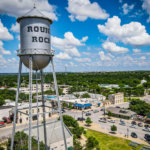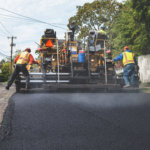The City of Round Rock is participating in the Residential End Uses of Water Study through the The Water Research Foundation to better understand how water is used in homes across the community. This important survey provides residents with an opportunity to help improve water management and conservation efforts throughout the city.
The survey helps identify where water is used most, making it possible to target conservation efforts in specific areas, such as encouraging the installation of water-efficient appliances or promoting habits that reduce unnecessary consumption. The data collected will also help city planners make informed decisions about upgrading and expanding Round Rock’s water infrastructure. The study may also identify opportunities for residents to reduce water use, particularly in areas like outdoor irrigation, where excessive water consumption can occur. The information gathered assists city officials in making policy decisions, from creating regulations to offering incentives that support water conservation.
Residents are encouraged to complete the Residential End Uses of Water Survey online by clicking the button below. The survey closes on March 31.
Preparing for the Future: City of Round Rock’s water portfolio
Meeting Round Rock’s water demand while preparing for the future has required long-term commitment and innovative solutions.
The primary source of Round Rock’s water is Lake Georgetown and Lake Stillhouse Hollow, managed by the Brazos River Authority. As the city’s population has increased, Round Rock has continued to diversity its water portfolio. In 2007, Round Rock partnered with Cedar Park and Leander to form the Brushy Creek Regional Utility Authority (BCRUA) to secure water from Lake Travis, adding a new source from the Colorado River basin.
In 2012, the BCRUA completed a floating intake at Lake Travis to draw water into a regional treatment plant. While this solution addressed immediate needs, a more long-term approach was in the plans to withstand drought conditions. In 2022, construction began on a new deep water intake at Lake Travis. This intake will draw water from deeper in the reservoir, allowing for continued access even when lake levels drop. The $224.8 million project is expected to be complete by 2027.
Conservation plays an important role in managing water resources. In 2024, Round Rock adopted permanent watering restrictions, limiting outdoor watering to two days per week. These rules apply year-round, not just during drought conditions. The goal is to reduce peak demand and promote responsible water use. The City also offers rebates to encourage efficient water use, including incentives for water-saving fixtures and rainwater harvesting systems.
Round Rock also makes use of reuse water to reduce demand on the drinking water system. Originally launched in 1998, the City’s reclaimed water system has grown to include new pipelines and connections to irrigation sites, parks and some businesses. By using treated wastewater for irrigation, the city preserves potable water for essential needs.
The city has also prepared for unexpected challenges by strengthening water infrastructure. Backup generators have been installed at key facilities to keep water flowing even during power outages. Regular maintenance and upgrades ensure that the system remains reliable and efficient.
Round Rock’s water security strategy relies on careful financial planning and a combination of funding sources to minimize the impact on its water customers. The City primarily funds water projects through utility revenues, which are reinvested into system improvements. A tiered water rate structure encourages conservation while generating funds for capacity projects, and water and wastewater impact fees on new developments allow growth to help pay for growth.







